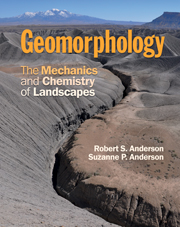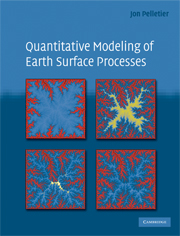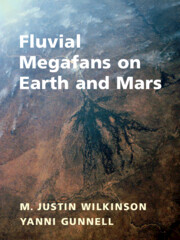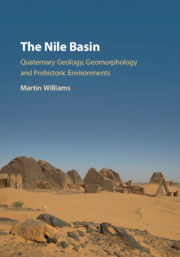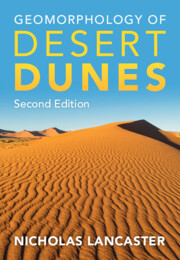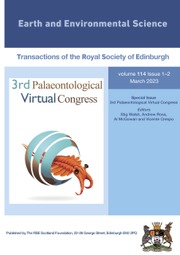Geomorphology
This textbook provides a modern, quantitative and process-oriented approach to equip students with the tools to understand geomorphology. Insight into the interpretation of landscapes is developed from basic principles and simple models, and by stepping through the equations that capture the essence of the mechanics and chemistry of landscapes. Boxed worked examples and real-world applications bring the subject to life for students, allowing them to apply the theory to their own experience. The book covers cutting edge topics, including the revolutionary cosmogenic nuclide dating methods and modeling, highlights links to other Earth sciences through up-to-date summaries of current research, and illustrates the importance of geomorphology in understanding environmental changes. Setting up problems as a conservation of mass, ice, soil, or heat, this book arms students with tools to fully explore processes, understand landscapes, and to participate in this rapidly evolving field.
- Presents a quantitative, process-oriented approach that starts from basic principles to build a fundamental understanding of geomorphology
- Encourages use of basic physics and chemistry and simple models to develop students' insight into the interpretation of landscapes
- Covers cutting edge topics in geomorphology, including the revolutionary development of cosmogenic nuclide dating methods and modelling
- Links geomorphology to other Earth sciences, including geophysics, atmospheric science, geochemistry and geochronology, to show students the links between disciplines
- Illustrates the great importance of geomorphology in the understanding of environmental change
- Pedagogical features include boxed work examples, real-world applications, end-of-chapter problems and appendices
Reviews & endorsements
"... this book is terrific! ... a model of what a textbook should be, and the first place I'd send a student or colleague to get them excited about landscapes and how we study them." Chris Paola, Professor of Geology & Geophysics, St. Anthony Falls Laboratory, Minneapolis
"This much needed, skillfully crafted text will be welcomed by the geomorphology community. ... the text can be used for an introductory course, or as part of a more advanced course. ... The overall reaction of my students using a draft version has been very positive." David Jon Furbish, Professor & Chair, Department of Earth & Environmental Sciences, Vanderbilt University
"A wonderful, wide ranging review of the modern science of geomorphology." Niels Hovius, Lecturer, Department of Earth Sciences, University of Cambridge
"The book is both authoritative and accessible, encouraging students (and instructors) to think creatively and precisely about how the landscape evolves. Unlike previous geomorphology texts, it provides a consistent approach for defining and solving models for the full range of features found on the surface of the Earth." Peter R. Wilcock, Professor & Associate Chair, Department of Geography & Environmental Engineering, Johns Hopkins University
"It is an excellent book, especially with respect to incorporating the basic science and physics of the processes outlined in the main text as well as providing an accessible narrative explanation of the different environments covered. As such, I intend to strongly recommend ... it to my first year Earth: Portrait of a Planet module ... as one of three key texts for the module. I will emphasise this text for those students on the BSc Geography and BSc Environmental Sciences ... programmes ... as being useful throughout their undergraduate degree. In particular it will be a help for second year modules Global Environmental Change, Earth Systems Cycles and Research Strategies in Physical Environments, as well as providing preliminary reading for specialist modules in the third year." Dr Simon Carr, School of Geography, Queen Mary University of London
"... an excellent book, especially with respect to incorporating the basic science and physics of the processes outlined in the main text as well as providing an accessible narrative explanation of the different environments covered." Dr Simon Carr, Queen Mary University of London
"...one of the best sources of information on process geomorphology that this reviewer has seen in many years. ... This reviewer wishes this book had been available when he was a student. ...Highly recommended." CHOICE
Product details
July 2010Paperback
9780521519786
651 pages
277 × 219 × 30 mm
1.79kg
578 b/w illus. 10 tables 185 exercises
Available
Table of Contents
- Preface
- 1. Introduction
- 2. Whole Earth morphology
- 3. Large scale morphology: the roles of geophysics
- 4. Tectonic geomorphology
- 5. Atmospheric processes and climate
- 6. Establishing timing in the landscape: dating methods
- 7. Weathering
- 8. Glaciers and glacial geology
- 9. Periglacial forms and processes
- 10. Hillslopes
- 11. Water in the landscape
- 12. Rivers
- 13. Bedrock channel incision
- 14. Sediment transport mechanics
- 15. Eolian processes and forms
- 16. Coastal geomorphology
- 17. Geomorphology of big floods
- 18. Whole landscapes
- Appendix A. Physics
- Appendix B. Mathematics
- References
- Index.

